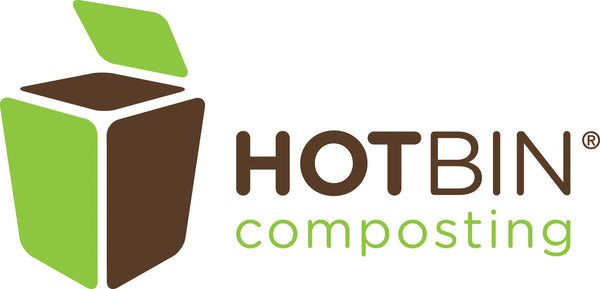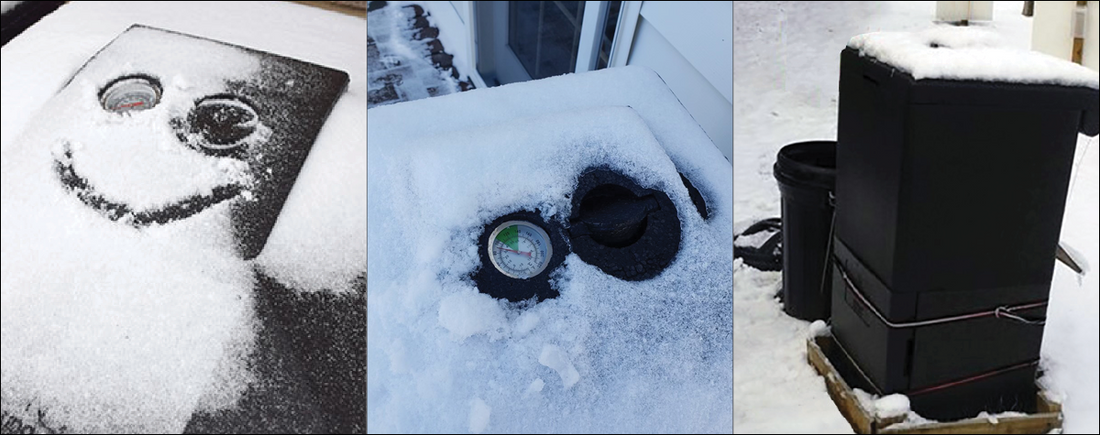Overcoming Winter Challenges with HOTBIN
If you're committed to reducing landfill waste through home composting but find winter temperatures challenging, a hot composter like HOTBIN can make it possible year-round.
The HOTBIN Advantage
The HOTBIN is capable of working at 100-140°F all through winter, even when outside temperatures fall to 5°F. To achieve these composting temperatures during cold days, follow these tips:
-
Add waste regularly: At least once a week.
-
Add sufficient waste and easy to digest (if possible): At least 11 lbs. per week (2 small or 1 large container).
-
Include shredded paper and wooded material (mulch): Add shredded paper or corrugated cardboard and wood-chips/mulch following suggested ratios to waste being fed.
-
Re-start if needed: Use the provided ‘kick-start’ hot water bottle if the waste temperature drops below 68°F.
The Science of Heat Retention
The HOTBIN and bacteria work according to the laws of nature:
-
Heat Loss: Hot things cool down. The Expanded Polypropylene (EPP) insulated walls of the HOTBIN slow the rate of heat loss.
-
Energy Input vs. Output: To maintain heat, constant energy (food waste) must go in to keep bacteria working.
-
Bacterial Activity: Bacteria generate more heat at higher temperatures but work very slowly or not at all below 41°F. Cold bacteria cannot warm up the bin alone and may need a ‘kick-start’ in winter.
What Happens When It Snows?
If the HOTBIN is running at 104-140°F, it will continue working even when it snows. Snow on the valve melts due to the hot air exiting the valve. However, exceptionally heavy snow (≈2 inches) may require you to brush it off to keep the valve clear.
If the HOTBIN is lukewarm (68-86°F), it may not generate enough hot air to melt the snow, and you’ll need to manually wipe snow from the valve.
Re-starting Your HOTBIN with the Kick-Start Water Bottle
If the HOTBIN temperature falls below 60°F, use the kick-start bottle provided to revive it. Here’s how:
-
Fill the Bottle: Carefully fill the HDPE bottle with boiling water. Use gloves to twist the cap and handle the bottle.
-
Position the Bottle: Bury the filled bottle in the compost, covering it with 4-8 inches of freshly added, easily compostable waste.
-
Seal and Wait: Close the HOTBIN lid and wait 4-6 hours before rechecking the internal temperature.
- Remove the Bottle once composting temperature is reached.
Safety Note
-
Do not replace the provided kick-start bottle with a glass container, as it can shatter; or another plastic bottle, as it can melt.
-
At any time you can buy an additional bottle on website.
The Science Behind the Kick-Start Bottle
Bacterial activity generates heat in a compost heap. However, bacteria do not grow effectively below 41°F (5°C) and cannot survive at 32°F (0°C). Introducing a bottle of hot water transfers heat to the cooler compost, warming it to 86-104°F for a brief period. Within this range, bacteria become active again, generating more heat to sustain the composting process.
Key Takeaways
To maintain composting temperatures during winter:
-
Provide a steady supply of waste, paper and wood-chips (mulch).
-
Use easily compostable materials for faster results.
-
Use the kick-start bottle when necessary.
For more tips on winter composting and HOTBIN Composters, visit our website.

